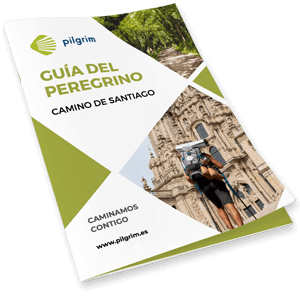Get ready for the
Holy Year
The Xacobeo Year 2027 is approaching and, as happens every Holy Year, the number of pilgrims traveling the Camino de Santiago increases exponentially. Start planning your Camino so you don’t run out of availability for your preferred dates.
We’ll inform you without obligation
Provide your details and we’ll advise you

Xacobeo 2027
Also known as the Holy Year or Xacobeo Year, it originated with the discovery of the tomb of the Apostle Saint James the Greater (9th century). Throughout history, it became a major stream of pilgrimage and a religious and cultural center of worldwide resonance, maintaining today its extraordinary power to attract people.
The Camino de Santiago has left a mark on millions of people who travel it each year, whether for devotion, a sporting challenge, personal growth, or a connection with the cultural and natural environment. During Jacobean years, the influx is even greater. In addition, there is still the possibility of receiving forgiveness for sins, known as the Jubilee.
Why is it a Holy Year?
A Compostelan Holy Year occurs when July 25, the feast day of the martyrdom of the Apostle Saint James, falls on a Sunday.
Due to leap years, Holy Years follow a 6-5-6-11 year pattern. 2021-22 were the most recent Holy Years (the extension was due to COVID-19 restrictions). 2027 will be the next Xacobeo Year, followed by 2032.
The Holy Year only occurs 14 times each century, so during these years, the surge in pilgrimages increases considerably.

Start your Camino
The origin of a thousand-year-old route
From the creation of this pilgrimage route to the Galician capital, several routes have emerged so that pilgrims from different places can access the tomb. Some of these routes are directly related to Saint James the Apostle.
A legacy of roads to Santiago
A network of Caminos that connects the most distant parts of Europe with the Apostle’s tomb. These routes represent a significant part of our cultural heritage.
Experience Xacobeo 2027
We help you organize one of the greatest experiences there is, in the most important year to do the Camino de Santiago, the Holy or Xacobeo Year.

Earn your Jubilee
Earning the Jubilee means obtaining the plenary indulgence or forgiveness of all sins granted by the Church.
All pilgrims who visit the Apostle’s tomb in the Cathedral of Santiago during the Holy Year can receive this plenary indulgence.
To do so, pilgrims must fulfill certain requirements specified by the Church, which we outline below:
Visit the Cathedral of Santiago
Visit this Christian temple any day during the Holy Year.
Say a prayer
Attend Holy Mass and pray, as decreed by the Supreme Pontiff.
Confess and receive Communion
Within the fifteen days before or after visiting the Cathedral.
Accommodations during the Holy Year
The number of pilgrims on the Camino de Santiago grows significantly during Holy Years, especially in July, as many pilgrims try to arrive in Santiago de Compostela in time for St. James Day celebrations on July 25.
Eleven years after the last Holy Year and with the increasing international recognition of the Camino, a large number of pilgrims is expected.
Plan ahead and organize your Camino so you don’t run out of accommodations during this very special year.
Don’t wait any longer!
Plan your Xacobeo now!
Experience the greatest human and cultural adventure.

Contact us
At Pilgrim we provide all the organization and guidance necessary to prepare the Xacobeo Year and enjoy this experience to the fullest, one that you will surely never forget.
Most notable Caminos
We provide everything you need to do your Camino in the most comfortable way possible. We take care of all the technical arrangements so you can be free of worries. Feel confident if anything should happen along the route, we are there along the entire Camino.
This route is the most recognized worldwide, the busiest, and the one with the greatest cultural and historical heritage tied to the Camino. It offers a wide range of services for pilgrims. However, although there are many options, it can be very crowded during high season (such as summer), making it difficult to find accommodations. If you’re considering public lodgings, it can be even more challenging. Keeping this in mind and with the upcoming Xacobeo Year, it’s advisable to start planning your adventure soon.
Today, it’s the second most traveled route. Crossing two different but closely connected countries, Spain and Portugal, adds a special appeal that can be irresistible for pilgrims. Additionally, from the city of Porto, there is an alternative route along the coast, which later rejoins the main route in Galicia, specifically in the town of Redondela.
Historically, this was the first Camino de Santiago route, initially traveled by King Alfonso II “the Chaste.” Over time, it lost relevance compared to other routes like the French Way, which became the main route because it connected directly to the rest of Europe and was mentioned in the Codex Calixtinus. Nowadays, this Original Way is regaining importance, primarily because it is quieter and less crowded, thanks to its relative difficulty as it passes through areas with steep slopes and mountainous terrain.
Possibly the most beautiful route among all those that make up the Camino de Santiago. This is due to the coastal landscapes of northern Spain, combined with the green fields and forests also found in these areas. Furthermore, it passes through regions such as the Basque Country, recognized worldwide for its exceptional cuisine. It’s undoubtedly a long route, but every step is worth it.

